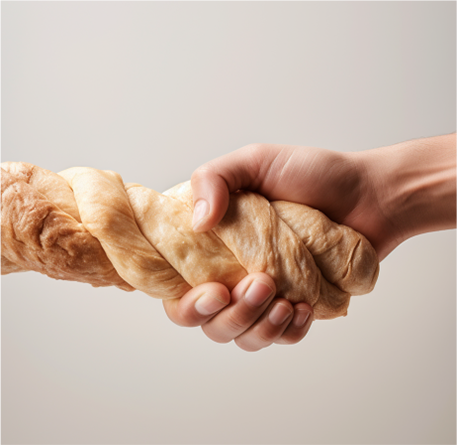In today’s fast-paced world, where efficiency and quality are key, the production of cookies has evolved from small-scale manual efforts to large, automated processes. Engineering and automation in cookie production have become game-changers, significantly impacting not just the cost, but also the quality and taste of the final product.
Engineering the Cookie-Making Process
The production of cookies starts with the mixing of dough—a process that needs precision and consistency to achieve the desired results. Engineering innovations have introduced various types of mixers like horizontal-fixed bowl mixers, vertical mixers, and continuous mixers, each designed to handle different dough consistencies.
- Horizontal mixers are ideal for tougher doughs where gluten development is essential.
- Vertical mixers are more suited for lighter, less demanding dough types.
- Continuous mixers offer a way to mix large quantities of dough, making the production process faster and more consistent.
These mixers ensure that ingredients are blended uniformly, which directly impacts the texture and consistency of the cookies.
The Role of Automation in Cookie Production
Automation comes into play at multiple stages of the cookie-making process, from shaping the dough to baking and packaging. Modern machinery like rotary molders, wire-cut machines, and bar machines automate the process of shaping dough, ensuring that each cookie is consistent in size and shape.
For instance, in rotary molding, the dough is processed using molds indented into metal cylinders, producing cookies with precise shapes and sizes. Wire-cut machines, on the other hand, extrude dough through nozzles and use a wire to cut them into uniform pieces.
Automation also minimizes human error, which is crucial in industries like food production where consistency is key. By ensuring uniformity, machines can help maintain product quality, prevent wastage, and reduce manual labor.
Cost Benefits of Automation
One of the most significant impacts of automation is on the cost of production. Automated systems drastically reduce the need for human labor, cutting down operational costs. While the initial investment in automation technology can be high, the long-term savings in labor and the reduction of errors or defects in the production process more than make up for it.
Moreover, automation allows for mass production, meaning more cookies can be made in less time, increasing overall output. This directly influences the pricing of the product, making it more affordable for consumers while maintaining profitability for manufacturers.
Quality and Taste
Automation doesn’t just improve cost-efficiency; it also enhances quality and taste. With the precise control that machines offer over factors like mixing times, baking temperatures, and cooling periods, manufacturers can ensure that each batch of cookies is identical in taste and texture.
For example, automated ovens use a combination of convection and radiant heating to distribute heat evenly across the baking chamber. This ensures that every cookie is baked to perfection—crispy on the outside, soft on the inside—without the risk of underbaking or burning.
Automation also plays a key role in maintaining hygiene standards, which directly impacts the quality and safety of the product.
A Practical Example: Mass-Producing Chocolate Chip Cookies
Consider a large-scale factory producing chocolate chip cookies. Automation allows the factory to produce hundreds of cookies every minute with machines like wire-cutters ensuring that each cookie has the right amount of dough and the correct number of chocolate chips.
With manual labor, inconsistencies can occur—one cookie may have too few chocolate chips while another may have too many. But automation ensures uniformity in ingredient distribution, contributing to better taste and appearance. Additionally, since the cookies are baked at controlled temperatures and times, every cookie comes out perfectly golden and crisp.
The Future of Automation in Cookie Production
As technology continues to advance, the role of automation in cookie production will only grow. With the potential for AI integration, machines will become even smarter, capable of adapting to different recipes and conditions on their own, further enhancing productivity and quality control.
Conclusion
Engineering and automation in cookie production have transformed the industry, enabling manufacturers to produce large volumes of cookies efficiently, while maintaining high standards of quality and taste. For consumers, this means delicious cookies at a more affordable price. For manufacturers, it’s a win-win situation with improved productivity and lower costs.
In the cookie business, embracing automation isn’t just a trend—it’s the future. The use of advanced machinery ensures that both small bakeries and large factories can meet consumer demand while consistently delivering a product that’s delicious and uniform in quality.
Quote: “In every bite of a perfectly made cookie, there’s a blend of technology, precision, and craftsmanship.”
As we move forward, automation will continue to refine the way we make cookies, pushing the boundaries of efficiency, flavor, and consistency to even greater heights.


